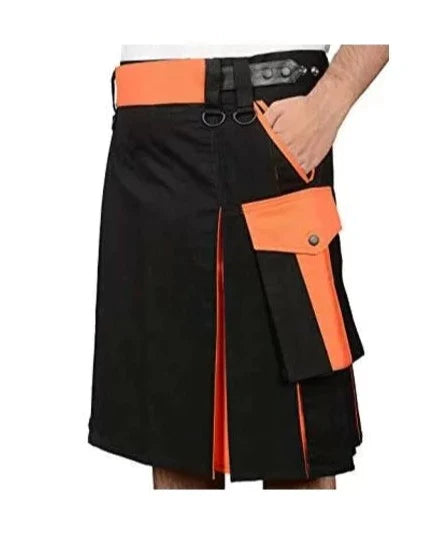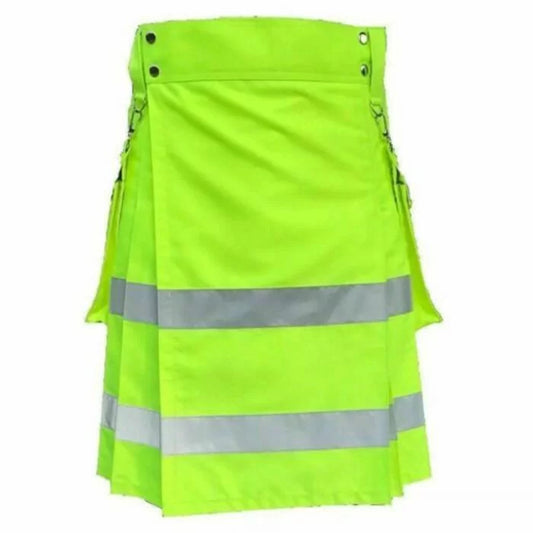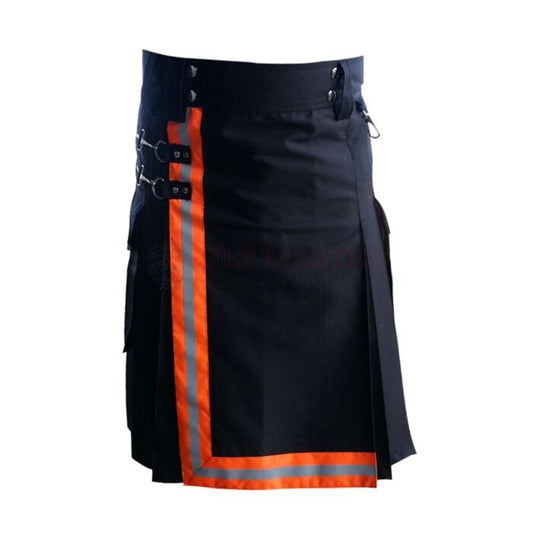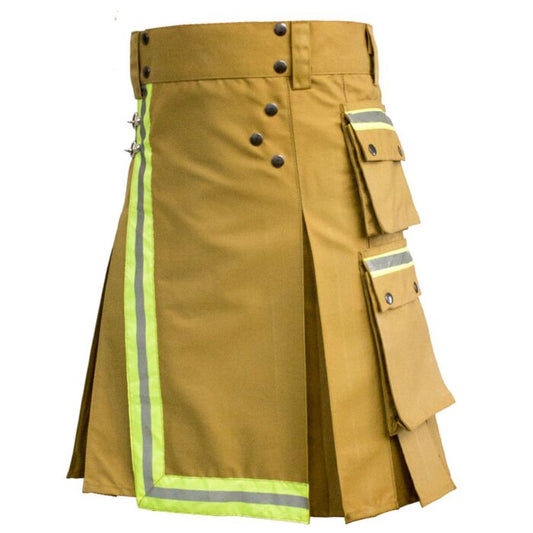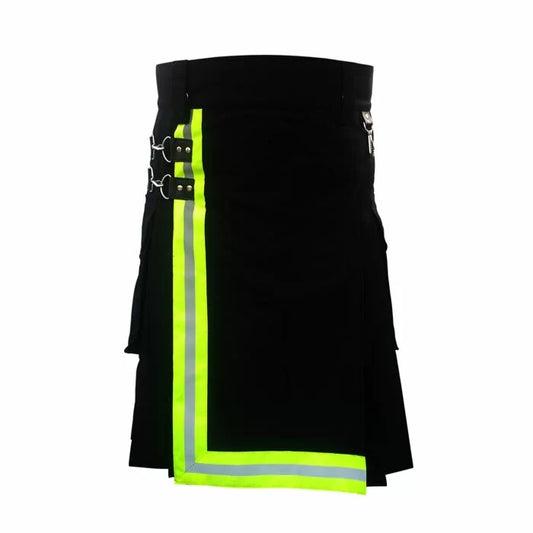-
Black with Orange Straps Utility Firefighter Kilt
Regular price $123.00 CADRegular priceUnit price / per$136.00 CADSale price $123.00 CADSale -
Orange with Silver Reflecting Trim Utility Firefighter Kilt
Regular price $123.00 CADRegular priceUnit price / per$136.00 CADSale price $123.00 CADSale -
Black With Orange Reflecting Trim Utility Firefighter Kilt
Regular price $123.00 CADRegular priceUnit price / per$136.00 CADSale price $123.00 CADSale -
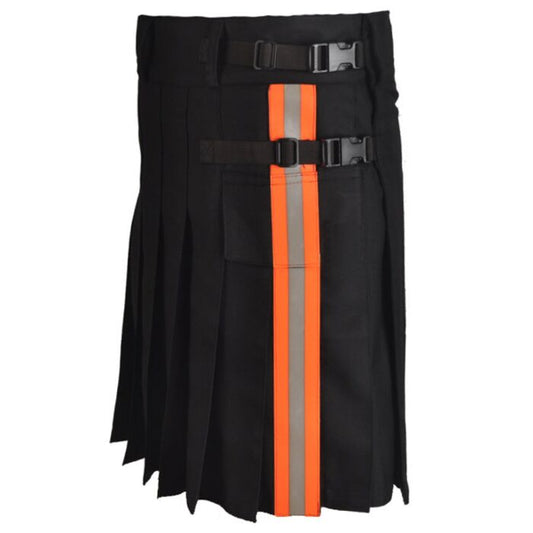 Sale
SaleFireman Kilt
Regular price $123.00 CADRegular priceUnit price / per$164.00 CADSale price $123.00 CADSale -
Khaki with Orange reflecting trim strap Utility Firefighter kilt
Regular price $123.00 CADRegular priceUnit price / per$136.00 CADSale price $123.00 CADSale -
Firefighter Turnout Fireman Kilt
Regular price $123.00 CADRegular priceUnit price / per$136.00 CADSale price $123.00 CADSale -
Khaki with Yellow Reflecting Trim Utility Firefighter Kilt
Regular price $123.00 CADRegular priceUnit price / per$136.00 CADSale price $123.00 CADSale -
Black with Yellow Trim Strap Utility Firefighter Kilt
Regular price $123.00 CADRegular priceUnit price / per$136.00 CADSale price $123.00 CADSale
Collection: Firefighter Kilts
Firefighter Kilts: Combining Tradition with Protection
Introduction: Firefighter kilts are specialized garments designed to provide firefighters with comfort, mobility, and protection in the demanding and hazardous environment of firefighting. These kilts blend elements of traditional Scottish attire with modern firefighting gear, offering wearers a unique combination of heritage-inspired style and practical functionality. In this guide, we'll explore the origins, uses, features, safety considerations, and manufacturing process of firefighter kilts.
Origins and Evolution: Adaptation of Traditional Kilts The concept of firefighter kilts originated from a desire to provide firefighters with comfortable and functional attire that reflected their Scottish heritage. Kilts were adapted to meet the specific needs and challenges of firefighting, incorporating flame-resistant materials, reflective accents, and specialized features.
Evolution of Firefighting Gear As firefighting techniques and equipment evolved, so too did firefighter kilts. Modern firefighter kilts are designed with input from firefighters themselves, incorporating feedback on comfort, mobility, and safety to ensure optimal performance in the field.
Uses of Firefighter Kilts: Protective Gear for Firefighters Firefighter kilts serve as essential protective gear for firefighters, offering flame-resistant properties, thermal insulation, and enhanced visibility in hazardous conditions. These kilts provide wearers with an added layer of protection while allowing for ease of movement and flexibility during firefighting operations.
Symbol of Pride and Identity In addition to their practical function, firefighter kilts also serve as symbols of pride and identity for firefighters. Many firefighters wear kilts during ceremonial events, parades, or public appearances to showcase their heritage and camaraderie within the firefighting community.
Features of Firefighter Kilts: Flame-Resistant Materials Firefighter kilts are constructed from flame-resistant fabrics such as Nomex, Kevlar, or other aramid blends. These materials provide protection against heat, flames, and thermal hazards encountered in firefighting operations.
Reflective Accents Many firefighter kilts feature reflective accents or striping to enhance visibility in low-light conditions or smoky environments. Reflective materials help firefighters remain visible to their teammates and emergency responders, improving safety during rescue operations.
Functional Design Firefighter kilts are designed with practical features such as adjustable waistbands, reinforced stitching, and ample pockets for storing essential tools and equipment. These features ensure comfort, durability, and functionality in the demanding environment of firefighting.
Safety Considerations: Flame Resistance Firefighter kilts must meet rigorous standards for flame resistance to protect wearers from heat and flames encountered in firefighting operations. Kilts should be constructed from flame-resistant materials and undergo testing to ensure compliance with relevant safety standards.
Heat Protection In addition to flame resistance, firefighter kilts provide thermal insulation to protect wearers from heat exposure during firefighting operations. Kilts should be made from materials that offer heat resistance and thermal insulation properties to minimize the risk of burns and heat-related injuries.
Manufacturing Process: Material Selection The production of firefighter kilts begins with the selection of high-quality flame-resistant materials such as Nomex, Kevlar, or other aramid blends. These materials are chosen for their durability, heat resistance, and flame-retardant properties.
Pattern Making and Cutting Patterns are drafted based on the desired style and measurements of the kilt. The flame-resistant fabric is then meticulously cut into panels, ensuring precise shapes and proportions.
Assembly and Construction Skilled craftsmen assemble the fabric panels, incorporating functional details such as reinforced stitching, adjustable waistbands, and reflective accents. Careful attention is paid to quality control to ensure that firefighter kilts meet rigorous safety standards and provide optimal protection for wearers in the field.
Conclusion: Firefighter kilts are essential protective gear designed to provide firefighters with comfort, mobility, and protection in the demanding environment of firefighting. By blending elements of tradition with modern firefighting technology, these kilts offer wearers a unique combination of heritage-inspired style and practical functionality. Whether worn during firefighting operations or ceremonial events, firefighter kilts serve as symbols of pride, identity, and camaraderie within the firefighting community.

